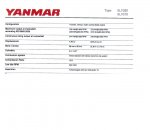PCUK
Well-known member
Thinking about a DIY re-power and saw this 3 litre V6 putting out 265hp. Big output from a small block that is worrying but wondered if anyone has any hands-on experience of their longevity and reliability and what the base engine is?

